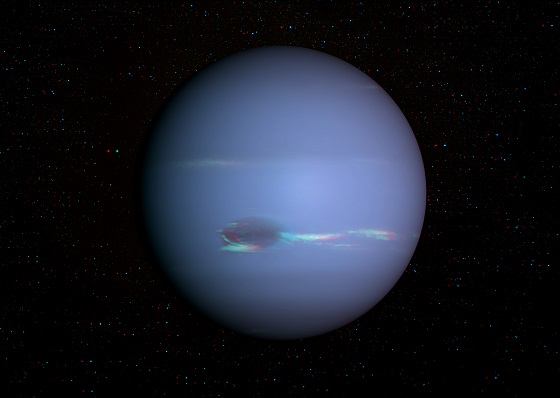science news bulletin news
By Swapna Krishna
Fast Company Magazine
Scientists have imaged one of Neptune’s elusive dark spots from an Earth- based telescope for the first time—and discovered that these mysterious features may be a particle layer below the ice and haze of the planet’s atmosphere. bulletin news
This particular dark spot, identified by Hubble in 2018, is wider than the Atlantic Ocean on Earth. It’s not the first one we’ve observed on the ice giant, though. Voyager 2 was the first spacecraft to discover the planet’s “Great Dark Spot” during its flyby in 1989; that spot disappeared by the time Hubble imaged the planet in 1994. But we’ve since uncovered many more.
These kinds of dark phenomena on planets aren’t uncommon. Jupiter’s Great Red Spot, the most famous spot in our solar system, is a raging storm in the gas giant’s southern hemisphere. It’s been shrinking over the past century, but it’s still large enough to hold all of Earth inside it. Other planets, including Saturn and Uranus, have spots as well.
This image shows Neptune observed with the MUSE instrument at ESO’s Very Large Telescope. A dark spot can be seen to the upper-right. [Image: ESO/P. Irwin et al.]
Scientists previously thought the dark spots on Neptune might be holes within the ice giant’s methane cloud tops, allowing us a peek into the planet’s lower atmosphere. But scientists haven’t been able to study these spots in any real detail because they’re not permanent fixtures.
Now, thanks to the European Southern Observatory’s VLT telescope, scientists were able to image this dark spot from an Earth-based telescope for the first time. Additionally, they may have figured out why these spots occur within Neptune’s atmosphere. The results were published today in a paper in Nature Astronomy by a team led by Patrick Irwin, a professor of planetary physics at Oxford University.
Using the VLT’s MAST tool, scientists were able to take a 3D spectrograph of the sunlight reflecting off of Neptune. This means they were able to pinpoint where the dark spot is located within Neptune’s turbulent atmosphere, as well its composition. They determined that the dark spot may be made of an aerosol layer located below the main atmospheric haze layer of Neptune (which is what we can see from Earth). That spot is less reflective than the ice and haze particles around it, which is why it appears to us as a dark spot.
Fast Company © 2023 Mansueto Ventures, LLC. Distributed by Tribune Content Agency, LLC.
science news bulletin news


